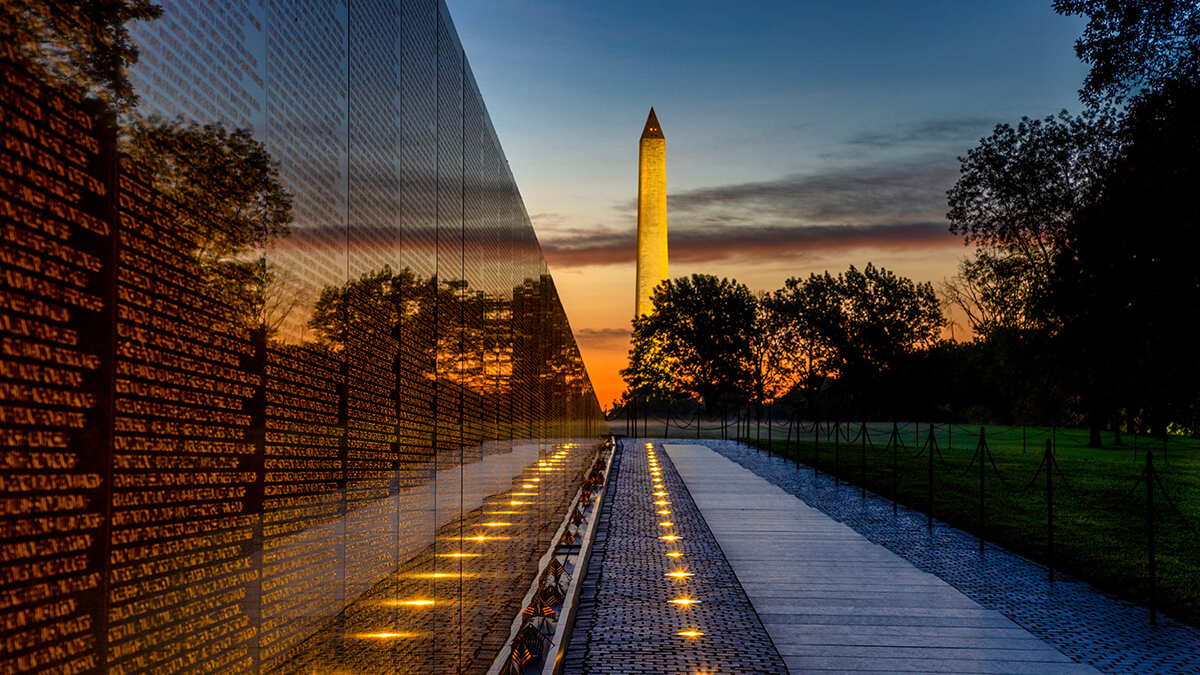Reflection and Remembrance
Most historians mark the end of the Vietnam War as having occurred on April 30, 1975, the day that North Vietnamese tanks rolled through the gate of the Presidential Palace in Saigon and a helicopter evacuated the last U.S. Marines out of the country. The 50th anniversary of these events offers an opportunity for reflection and remembrance. If we are wise, we will take to heart the tragic lessons learned, particularly of the human cost of war in terms of lives lost or irrevocably altered.
Novelist Tim O’Brien served in the 23rd Infantry Division and saw the horrors of war first hand. He was wounded by shrapnel from a grenade attack and received a Purple Heart. Returning to his hometown in Minnesota, he was dismayed at the lack of understanding of the war among those who did not experience it directly. He wrote The Things They Carried in part to provide greater awareness of conditions facing U.S. personnel in Vietnam, and of their efforts to readjust to civilian life.
Maya Lin’s design for the Vietnam Veterans Memorial, pictured above and referenced in Clue F of this week’s acrostic, proved to be controversial, like the war itself. In lieu of any heroic figures – or any human form at all – the Memorial presents the names of Americans who died in the war and, in doing so, gives us a powerful reminder of the many lives lost. Visitors to the Memorial walk down a sloping path to a vertex before ascending once again. Along the way to the vertex, the wall of names seems to grow ever taller, perhaps a metaphor for the manner in which our nation became increasingly embroiled in the Vietnam War. The wall also has a mirror-like quality; when you look at the names of the fallen, you can’t help but see yourself as well.
As a complement to the wall and its inscribed names, the Memorial also includes a realistic sculpture, designed by high school drop-out and artistic savant Frederick Hart, of three soldiers in combat gear.

In 1983, The New York Times ran a compelling essay by Tom Wolfe on Frederick Hart and that sculpture, “The Artist the Art World Couldn’t See.” As a teaser, here’s a passage from Wolfe’s essay:
“Not even Giotto, the 12-year-old shepherd boy who was out in the meadow with the flock one day circa 1270 using a piece of flint to draw a picture of sheep on the face of a boulder when the vacationing Florentine artist Cimabue happened to stroll by and discover the baby genius — not even Giotto could match Frederick Hart’s storybook rise from obscurity.”
As always, we welcome your comments on this week’s puzzle and its theme.


Another beautiful and poignant Acrostic! My solving experience was fairly methodical except I couldn’t figure out what was going on with the elaborate military trail answer. With it’s “NH” at the end, I feared some kind of mistake. And I had entered “e” rather than “o” as the second letter, corresponding to “new” in the quote rather than the correct “now.” At one point I had H E _ HI __NH and thought it must be some weird technology the US military uses to track people down. It took my entering all the other letters by way of the quote to finally recognize what I should have figured out much earlier.
I definitely plan to read what sounds like a powerful book. Thank you!
Sunt lacrimae rerum et mentem mortalia tangunt.
I had not heard of this book. I will now read it. Thank you for this memory.